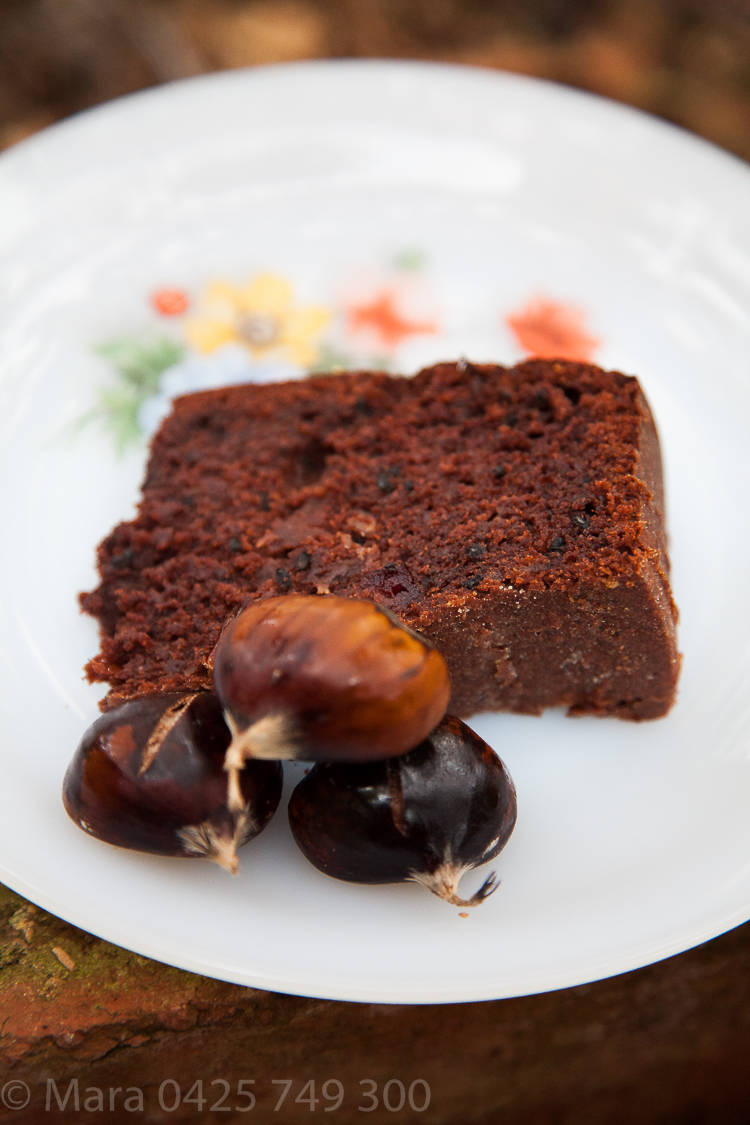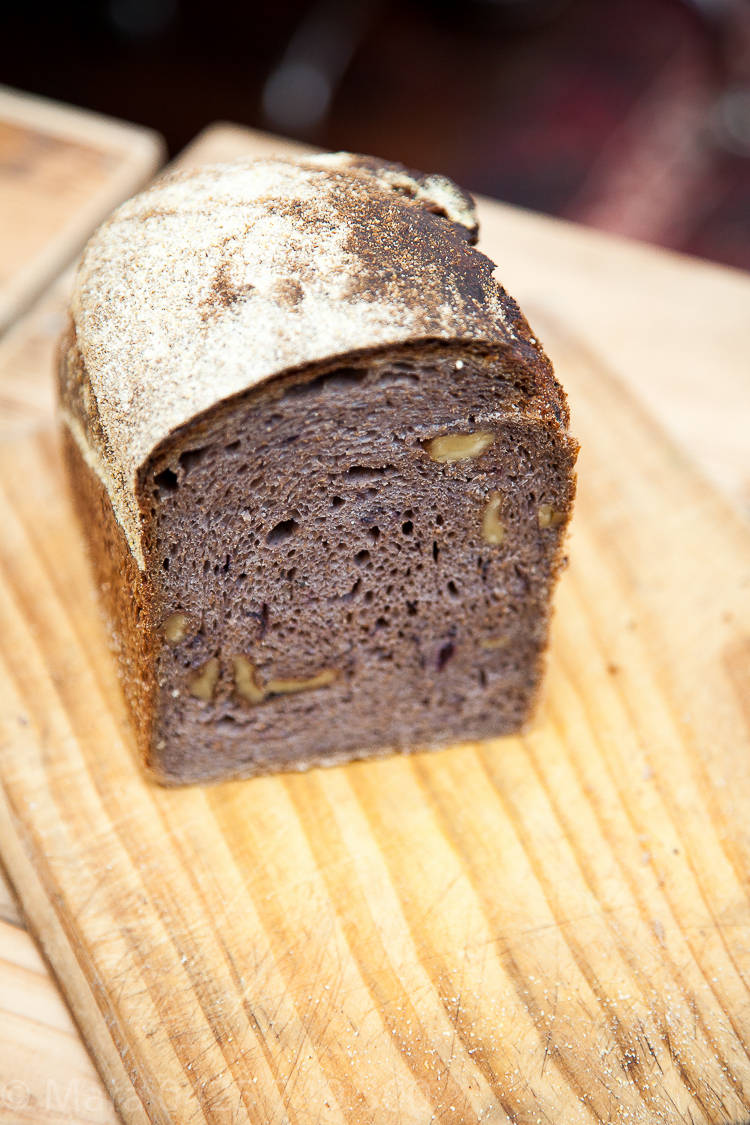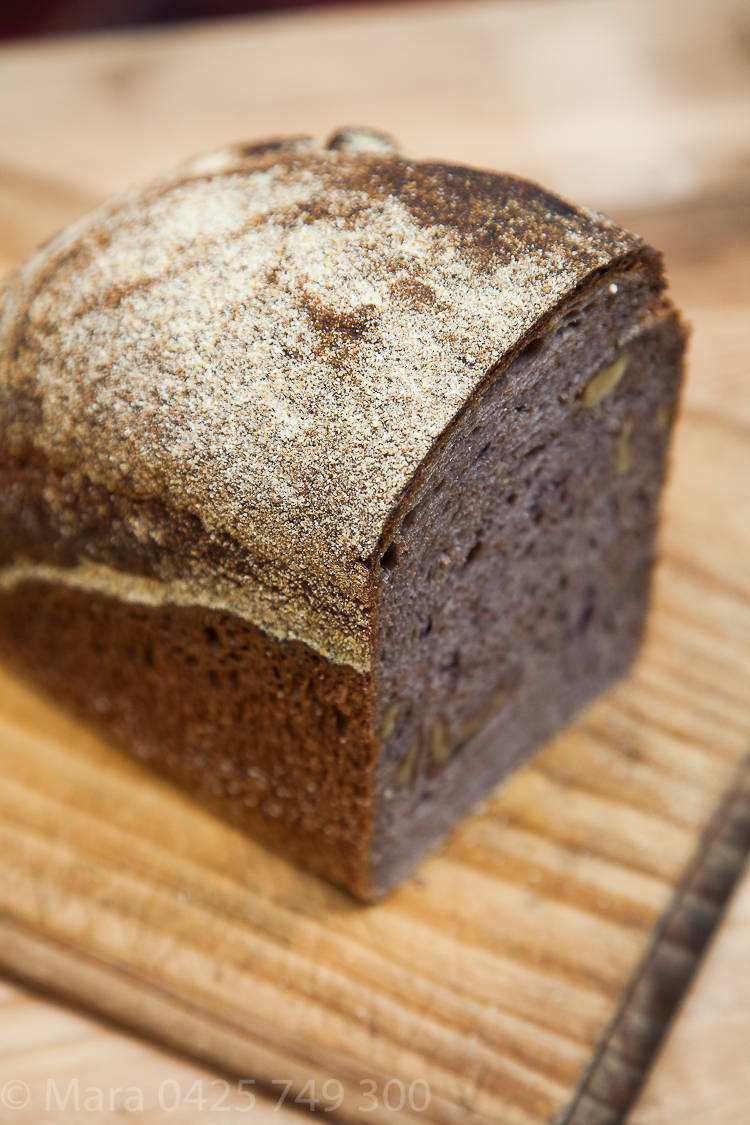700g bread loaves are all the rage at my house at the moment, it’s the perfect size for a family of five and keeps for over a week. After a year of bread making I feel free to make up the recipes as I go which is my favourite way to cook. I simply ask my stomach what it would like and then my taste buds become mobile and send messages, electric pulses to the lining of my stomach with a list of ingredients: linseed, white flour, rye leaven (Bread 1)… walnuts, currants, a mixture of all your left over flours (white, spelt brown, white spelt and a little durum wheat) rye leaven (Bread 2).
I am using the bakers % more and more freely to work out what type of loaf I want to make. The bakers percentage states that you weigh all other ingredients against the weight of the flour. The flour represents a constant 100% …in my 700g loaf, the 700g represents a total of 100%. I then weight water (hydration percentage) so that its weight represents a % of the weight of the flour and this percentage usually sits somewhere between 60% and 80%. A ciabatta uses a very wet dough and would use a hydration % around 80%.
The loaf I have made used a hydration percentage of 60%. Hence to the 700g I added 420g of water. The leaven/starter is measured as 20% (in this case 20% of 700 is 140g) and the salt % is 2% hence I used 14g of salt for my 700g loaf.
With regards to all other ingredients, such as the linseed, walnuts, currants…you are pretty free to add as little or as much as you like. Keeping in mind that the more you add the heavier the loaf will be, the denser it will become and that you will need to keep an eye on the amount of hydration your dough will need. You can add the fruit and seeds at the kneading stage or after the first rise. Some will say that you must always add after the first rise. The theory being that if you add ‘additional ingredients’ during kneading you will disrupt the gluten strands and their ability to connect and form long, organised chains. The gluten forms a network of infrastructure, like a well-organised web, which traps CO2, allowing the bread to rise beautifully.
Both of the loaves in the following pictures were made by adding the additional ingredients during kneading because I knew that I would not have the opportunity to add them later. The rise looks great to me, however what has been sacrificed is the texture of the currents or the integrity of the currents. The dark loaf is dark not because dark flour was used but because after 30mins of kneading (with a dough kneading Kitchen Aid) the currants pulverised and have coloured the dough a light purple. The walnuts however, have largely stayed intact.

A remaining small slither of chocolate chestnut cake (with black sesame) wich I managed to photograph before it was devoured. I adapted a Stephanie Alexander recipe from “The Cooks Companion”. I used the Simple Apple Cake recipe to guide me through wet to dry ingredients. The result was perfect! Delizioso, molto buono…





0 Comments